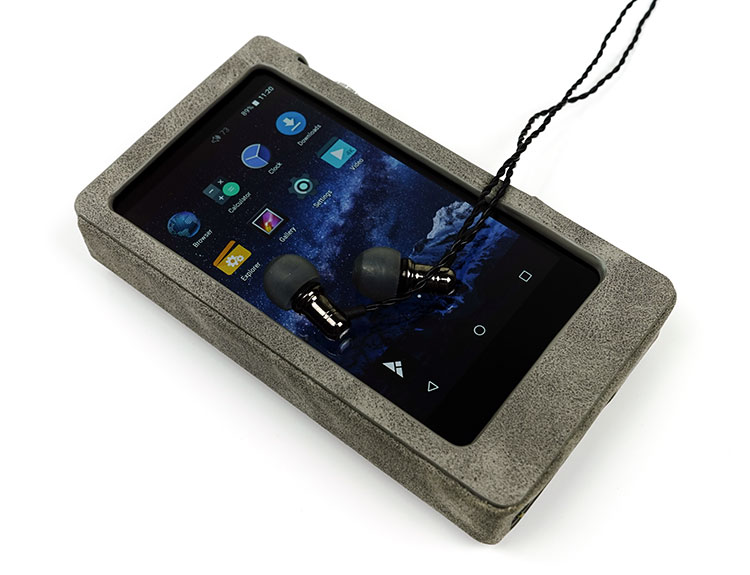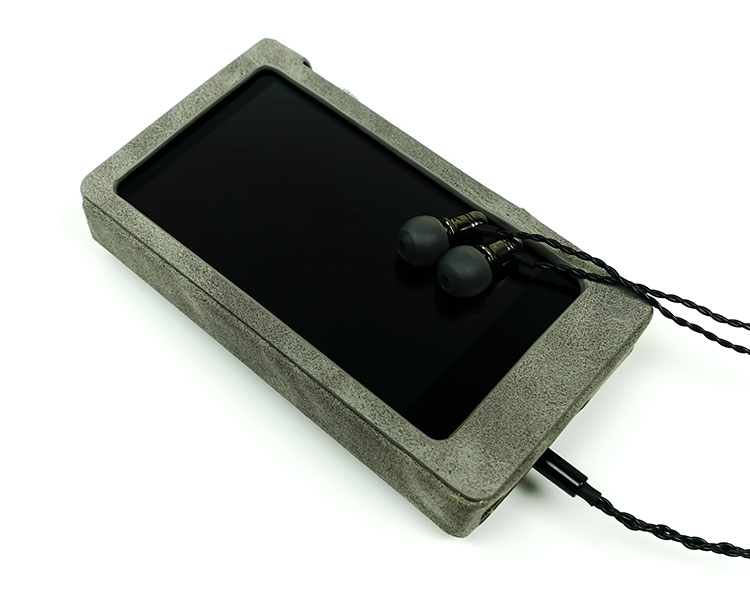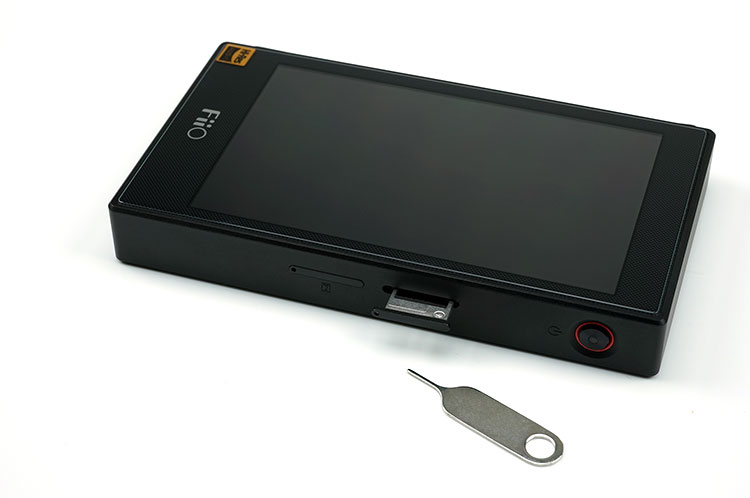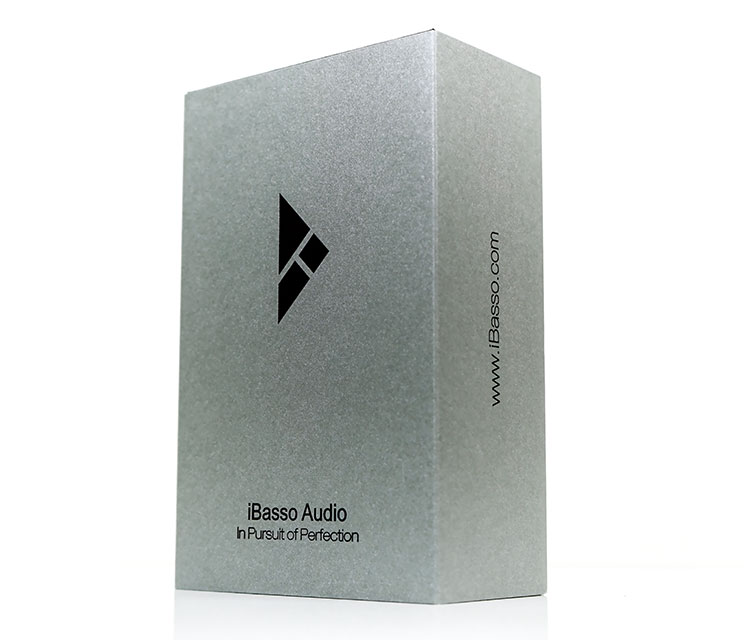Sound Impressions
Tonality & Presentation
Tonally, the DX150 is a little different to the DX200 but that is as much to do with the choice of Amp 6 stock amp card as well as the use of a dual AK4490EQ chipset. Personally, I think the DX150 is incredibly competitive and the gap between it and the DX200 is not as huge as the price difference would suggest.
This is a smoother sounding and more musical presentation than the DX200. The DX150/Amp 6 combo has a bit more even harmonic bias than the Amp 1 card but still has some of those distinctive AK4490 characteristics I have come to know well on other implementations. Characteristics such as a peppier lower treble presence than, say, the Opus#1 and #3 and an impactful and full-bodied low-end with most portable gear tested.
I would not characterize this presentation as overly warmed up though. A lot of the perceived warmth will be drawn mostly from that elevated and punchy low-end. The upper mids and the lower treble region is where the DX150 gets a little more neutral sounding for me with slightly less body in its percussion timbre than lower pitched string and drum instruments.
Treble, whilst lively, is still smoother sounding than the N5ii and certainly the more forgiving of the two. It is miles ahead of the X5iii edgier and more metallic sounding partial overtones. I think iBasso have really done an excellent job in keeping the treble performance of the DX150/Amp 6 as clear and smooth sounding as possible without sounding ‘muted’ and lacking in air. It just drops a little in terms of extension and forwardness in exchange for body and a slightly softer attack. It makes for a very pleasing listening experience.
DX200 Differences
Ultimately the amp card makes a difference to me tonally and the use of the AK4490EQ brings out more nuanced differences in terms of dynamic range and micro detail retrieval between it and the DX200. The DX200 is the quieter of the two with a perceptibly better dynamic range over the DX150. The noise floor is just a tiny bit higher on the DX150 than the DX200 even with both using Amp 6 so it is not purely an amp difference between say Amp 1 and Amp 6.
As a result, I find the DX200 just that bit better in terms of instrumental separation and layering with a bit more headroom and treble clarity. It is not a huge gap but enough to say the DX200 is the better of the two when placed side by side. On the flipside, I find the richer timbre and heavier more impactful low-end of the Amp 6 to be more musical and at times the more engaging and impactful with modern rock and pop or EDM and synth wave.
If you are happening to be using Amp 1 with the DX200 then thing get decidedly more neutral sounding with a more linear low-end and more treble extension and headroom than Amp 6. You also get a lot more power on tap with the Amp 1 than the Amp 6 for harder to drive headgear.
Matchability
Power
It really comes down to the amp card you decide to use on the DX150. With the stock Amp 6 card, you should have no issues with a broad range of IEMs and portable headphones. Headphones such as the Hifiman Edition X V2, AKG’s K812 and K872 sounded excellent with no driving issues.
The DX150 also coped very well with efficient planars such as the Oppo PM3 and the Hifiman HE400s. Amp 6 also had no problems driving the Audeze Sine, DX and iSINE range of planar earphones.
If I had a preference it would be the HE400S over the Oppo PM3. The smoother slightly softer sound seemed to pair very well with clean signatures or those with a good midrange emphasis. I had a particular fondness for the K872 pairing. It is fairly easy to drive but again, the smoother delivery of the DX150 Amp 6 card combo worked a treat on keeping the treble performance smooth yet detailed.
Efficiency
The DX150 is more capable than the X5iii for ultra-efficient and low impedance IEMs with much less background noise. Having said that the X5iii turbo balanced mode output is fairly powerful (740mW into 32Ω) compared to the DX150’s balanced equivalent (480mW). If you want to out-grunt the turbo balanced I would opt for Amp 1, Amp 3 or the new 4.4mm 6.2Vrms Amp 8. Amp 6 is more like Amp 2 in that is designed to be useful to a wide range of EMs and headphones in the portable category.
The Cayin N5ii may also be a bit more deft at really low-impedance IEMs than the DX150. Check out our noise section below on the reasoning behind this. However, the N5ii is not as powerful as the DX150 and will not be able to drive more demanding headphones as well as the DX150.
Noise
The DX150 noise floor using Amp 6 is marginally higher than the DX200 with Amp 1 and Amp6. I swapped both cards around and tested both balanced and unbalanced with the Campfire Andromeda and Shure SE846. Neither DAP has a completely silent or black background with super-efficient IEMs but the DX200 did marginally better with the same amp cards inserted. Balanced will yield a little more noise than unbalanced.
The noise level or hiss on the DX150 using Amp 6 is much lower than the X5iii, particularly when using its balance output but it is marginally higher than the N5ii balanced output in low gain mode. It would be nice to see if iBasso could also come out with a three-stage gain and just reduce low gain by about 3-4dB to see if it could achieve a black background with sensitive IEMs.
For lower sensitivity IEMs such as the Vega, Comet, Hum Pristine, and the Audeze iSine range you should no issues with noise on the DX150 with Amp 6 in either balanced or unbalanced output. In fact, all of those IEM selected produced a very black background with no perceived hiss.
Select Comparisons
Cayin N5ii
$399
Form Factor
The N5ii has just literally been “phased out” in favor of the N5iiS with beefed up memory and build quality. We have not got the “s” version yet but when we do we will give it a one-page update review. The N5ii is Cayin’s mid-fi follow up the N5 from a few years back. It scored highly in our review at the start of the year, particularly as a pairing with IEMs with its ultra-low noise floor.
It is much smaller than the DX150 and more pocketable. Both have balanced and single-ended outputs though the Cayin amp section is fixed and a little weaker than the DX150 stock Amp 6 card. The screen on the N5ii is smaller and not as good quality as the larger DX150 screen.
OS
The N5ii uses 1GB of RAM compared to the DX150’s 2GB of RAM. This is offset partially by the DX150 uses of Android 6 which does require higher RAM requirements than 1GB into Android 5.1 found on the N5ii.
Also, the N5ii uses Android 5.1 but it is heavily skinned by HiBy. It can take apps but is the primary UI is very much as a music player. The DX150 is “vanilla” Android and more apps based. The N5ii has Google Play integrated which the DX150 does not which some will find a lot easier to work with.
DAC
The N5ii uses a single ES9018K2M DAC chip solution compared to the DX150’s dual AK4490EQ implementation. Some might prefer the cleaner more analytical Sabre implementation but I think Cayin did a good job smoothing it out and making it less jarring in the treble performance. The dual AK4490EQ will sound the more natural all things being equal though in terms or decoding capability there is little difference between the two with both capable up to 384kHz and DSD256.
Performance
The Cayin N5ii’s Sabre and Amp combo delivers a slightly cleaner and brighter sounding presentation over the more relaxed even harmonic bias of the DX150 with Amp 6. Mind you, Cayin has done an excellent job smoothing out the potential treble glare from their Sabre DAC implementation. It sounds a little more liquid to me than the Onkyo Granbeat and not as metallic in the upper mids as the FiiO X5iii.
The DX150/Amp 6 combo also has a richer or fuller sounding low-end compared to the N5ii which retains a more linear feel to its bass response. Tested with a Hum Pristine the Amp 6 is punchy and deep sounding. The N5ii simply does not sound as spacious in the low to midrange as the DX150 stock combo.
On the flipside, the N5ii has a livelier upper mids and treble response with excellent headroom and instrumental separation. You also get a blacker background on the N5ii with that supremely clean low gain mode. Combining those two factors you get perceptible clarity and articulation in the N5ii treble response, making it sound more alive and energetic than the soft and smoother sounding DX150 top-end.
The DX150 really pairs much better with brighter or edgier headgear and particularly so with EDM, synth wave or old 80’s classic metal with a lot of percussion and synth energy. The N5ii is more adept using efficient IEMs with a focus on micro-detail found in acoustic quiet numbers where a black background is 100% required.
FiiO X5iii
$399
Form Factor
When it first came out I felt the X5iii set an important benchmark in terms of what a mid-fi DAP should look like and do. Technology moves fast and to a large extent, the X5iii has been surpassed by some newer DAPs with better performance.
The form factor of the X5iii is a little bit better than the larger DX150. I have always felt the X5iii shape is very ergonomic for single hand use. It also has dual memory slots, the same for the N5ii, and one more than the DX150. The screen on the X5iii is smaller and also has a lower level of resolution than the Dx150’s screen.
OS
The X5iii uses Android 5.1 with a Rockchip RK3188 and 1GB of RAM. It is pretty much the same as the Cayin N5ii in terms of pure grunt and some way short of the potential of the DX150 with 2Gb and Android 6.0. The DX150 lacks the dual boot of the X5iii to act as a dedicated player or the audio priority service of the N5ii’s OS though it will churn out bit-perfect via the Mango OS.
I/O
Inputs and outputs are similar with both digital and analog balanced, unbalanced and line out. The amp on the X5iii is not detachable though and its the weak spot for efficient IEMs with a higher than desired noise level compared to the very quiet Amp 6 performance on the DX150. Power output on the X5iii with the “turbo” option is actually very good now and more than the Amp 6’s balanced peak at 740mW into 32Ω. If that bothers you buy the Amp 1 card from iBasso for the DX150 and get up to 1W of power balanced instead.
DAC
Both use a dual AK4490 DAC design with the DX150 using the EQ version and the X5iii using the EN version. Not a huge amount of engineering difference but going by the numbers X5iii does not support DSD256. Instead, it is limited at DSD128 whereas the DX150 will go up to DSD256. The chip is capable so it is a software limitation put in there by FiiO.
Performance
Both are aiming for very similar ground with their tuning. Both are musical, both have a slight low to midrange bias and both are aiming for a warm/rich sounding instrumental timbre. However, the DX150/Amp6 combo does it a little better in a few key areas which make the difference to me.
The first is that black background. The DX150 is quieter, substantially so over the X5iii when paired with sensitive IEMs such as the Andromeda or high-end units such as the Vision Ears VE6. The DX150 is also going to be a better performer for music that requires plenty of dynamic range. That higher noise floor and slightly lower dynamic range of the X5iii will blur a little more micro detail on the X5iii.
The final key difference is the upper mids and lower treble timbre of the X5iii. It is a little edgier and harder sounding for me compared to the softer and more liquid tone of the DX150. This is something I found also in the i5 from Cayin to a certain extent. I did begin to wonder if this is an AK4490 trait, that slightly edgier lower treble instrumental timbre. I think the DX150 handles it a lot better with much less odd harmonic emphasis and more sustain producing more body and a smoother attack.
HiBy Music R6
$649
Form Factor
The R6 was our award winner alongside the DX200 for 2017. The stainless steel version is heavier than the DX150 but it is also smaller and more compact than the DX150.
The 2.5D screen of the R6 is gorgeous looking with a much smaller bezel than the DX150. Technically both have the same performance though. The R6 also uses 4.2″ IPS TFT screen with a 350dpi 16m color 1280 x 768 px resolution. The difference is in the presentation.
OS
Both use Android 6.0 and a fairly clean install at that with little or no bloatware. Neither have a dual boot, however, the R6 version is bit-perfect for all media player apps and comes with Google Play services installed for the international version. The DX150 is bit perfect for Mango and Neutron but beyond that, there are no definites. It also has no Google Play but you can sideload non-Google Play dependent apps.
The big difference is the RAM and processor. The R6 uses 3GB and Snapdragon 425 which is faster than the Dx150 Rockchip RK3688. It feels very snappy, almost smartphone levels of snappiness. There is nothing right now that can touch the R6 in terms of UX speed and the numbers show that. Also, the HiBY Music app is a little more matured than Mango with a bit more DSP tweakability.
I/O
Both have balanced and unbalanced outputs. Both have USB-C, line-out and digital outputs. However, the big weakness of the R6 is the high output impedance of the jack outputs. At 10Ω for unbalanced that makes the R6 unpredictable for low impedance skew on IEMs with sub-20Ω ratings, particularly multi-BA with crossovers. You will need an IEMatch 2.5mm or 3.5mm cable to cancel out that impedance mismatching on low impedance gear. The DX150 amp 6 card is just fine, with a sub-1Ω rating and requires no such cable.
DAC
Another major difference is the use of the more expensive but potentially a better performing dual ESS Sabre ES9028Q2M DAC setup inside the R6 compared with the dual AK4490Eq of the DX150. In terms of decoding, though both can handle up to PCM 384kHz and DSD256 and both have a digital filter control. the difference is likely to be felt in the dynamic range performance which is about 10dB greater on the R6 over the DX150.
The rest is really fine tuning and amp coloring with DSP from the R6 whose amp is not quite as powerful as the DX150 Amp 6 card. Its rated at 120mW (RMS) @ 32Ω unbalanced and 300mW (RMS) @ 32Ω balanced compared to the DX150’s 180mW unbalanced and 430mW balanced.
Performance
The choice between these two could well come down to tonal preference as much as technical capability. On the technical side, the R6 is the better of the two in terms of resolution and general levels of detail retrieval but then I would expect that given its more capable DAC chipset and slightly higher price point.
The R6 tonally is the more balanced sounding for me, with a natural timbre throughout that stays on the slightly fuller side of neutral. In particular, its treble performance is much smoother than the N5iii yet just as airy, if not more so with plenty of headroom. However, some might find it too balanced and may prefer the more musical tuning of the DX150 which has a bit more-low end body and a slightly softer attack.
Output Impedance
Both have a black background, very good ones at that with sensitive IEMs. However, the big caveat is that 10Ω output impedance of the R6 with sensitive IEMs. You will need an IEMatch cable to balance that out whereas the sub-1Ω impedance of the DX150 plays true without the need for a cable.
IEMs such as the Andromeda sound excellent with the DX150. That natural and smooth response pairs well with Andromeda’s energetic top-end to produce a very pleasing performance. With the R6 its tighter, leaner and brighter. That low-Z skew kills the sound for me and only with an IEMatch cable do I get the correct response.
Our Verdict
Competitive
I am honestly shocked at how competitive the DX150 is given its price point. At just a little over half the price of the DX200, this DAP does not sound like it had 50% of the quality taken out of it. In fact, in some areas, they actually have improved on the DX200 experience such as the improved form factor (no volume wheel guard) and a smoother LCD screen insert. If there is cost cutting it is so nuanced you could be forgiven if you thought there was almost none at all.
Differences
Is it as good as the DX200? In short, no, but that’s ok, it really should not be. The AK4490EQ is a sold chipset and does help substantially lower costs. However, its dynamic range and level of detail retrieval are not quite on the level of the DX200’s ES9028PRO. Instead, you get musicality, smoothness in part, and plenty of engaging impactful low-end. That is an enjoyable sound for modern rock and pop and one that is top notch for the price point.
OS Tweaks?
Is the OS a finished system? No again, but then it is really using the same system as the DX200 so no for the flagship also. Bluetooth is an area I think needs the most development right now. The Amp+DAC option has potential but really needs aptX and LDAC to settle its jitters and prevent annoying dropout. Google Play, oh how I wish this would happen as it makes apps management so much easier but it seems not to be the case.
Sound
In terms of sound quality, the DX150 is probably one of the best sounding mid-fi DAPs out there right now. No DAP under $500 has the same ‘open-ended’ potential. iBasso’s existing amp card system offers potential users a whole host of very refined amplification options. I rate iBasso’s cards higher than FiiO’s version with a lower noise floor and a more nuanced approach to delivering tonal variations that I think are genuinely useful and interesting to audiophiles.
Review Gear
- DX150 Amp 6 Card, DX200 Amp 1 card
- Hum Pristine, Campfire Audio Andromeda, Vega, Comet
- Audeze iSine 10, LCDi4, SINE DX
- Shure SE846
- MrSpeakers Aeon Closed
- AKG K812, K872
- Hifiman HE400s, Edition X V2
- Oppo PM3
- DAPs Opus #3, FiiO X5iii, Cayin N5ii, HiBy Music R6, Onkyo Granbeat
DX150 Technical Specifications
- OS: Android 6.0
- CPU: 64bit 8 Cores A53
- RAM: 2G LPDDR3
- Rom: 32G eMMC
- DAC: Dual AK4490EQ
- Sample Rate: PCM:8kHz-384kHz(8/16/24/32bits) native DSD:DSD64/128/256
- USB DAC Function: XMOS XU208, Thesycon USB driver.
- WiFi/Bluetooth: 802.11(b/g/n/ac)(2.4Ghz/5Ghz),Bluetooth4.1.
- Battery: 3.8V 4400mAh Li-polymer battery provided by MBELL.
- Quick Charge: PD2.0, compatible with QC2.0.
- Size: 128.5mm*69mm*19.5mm
- Weight: 245g
Specifications: (Measured with AMP6)
- 2.5mm Balanced Output:
- Output Voltage: 4.8Vrms(without load) 3.7Vrms(32Ω load), 425mW THD+N<0.001%)
- Frequency Response:10Hz-40KHz +/-0.5dB
- THD+N:0.00028%,-111dB (without load @2.4Vrms)
- 0.00032%,-110dB (32Ω load @2.4Vrms)
- Dynamic Range:118dB
- S/N:118dB
- Crosstalk:-119dB
- 3.5mm Single Ended Output:
- Output Voltage:2.4Vrms(without load)
- 2.4Vrms(32Ω load), 185mW THD+N<0.001%)
- Frequency Response:10Hz-40KHz +/-0.5dB
- THD+N:0.0004%,-108dB (without load @1.2Vrms)
- 0.0004%,-108dB (32Ω load @1.2Vrms)
- Dynamic Range:117dB
- S/N:117dB
- Crosstalk:-115dB
- Line out:
- Output Voltage:2.4Vrms
- Frequency Response:10Hz-40KHz +/-0.5dB
- THD+N:0.0004%,-108dB (without load @1.5Vrms)
- Dynamic Range :118dB
- S/N:117dB
- Average Play Time: 10.5 hours with the DX150








